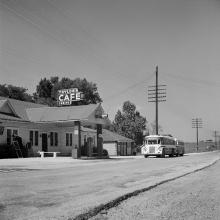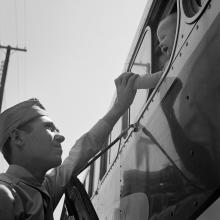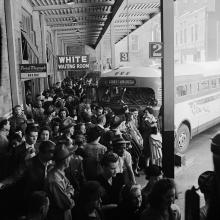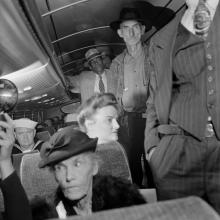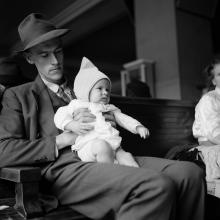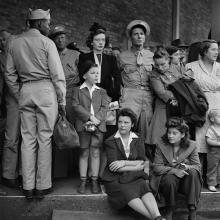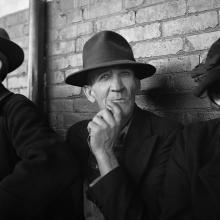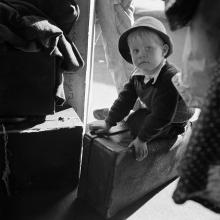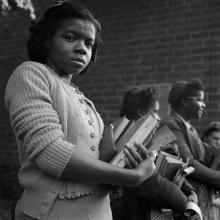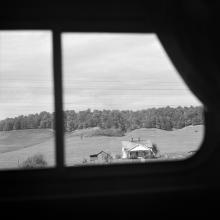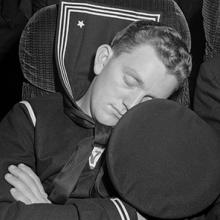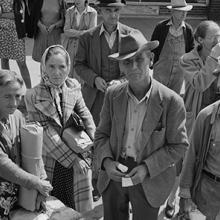Esther Bubley: 1943 Bus Story
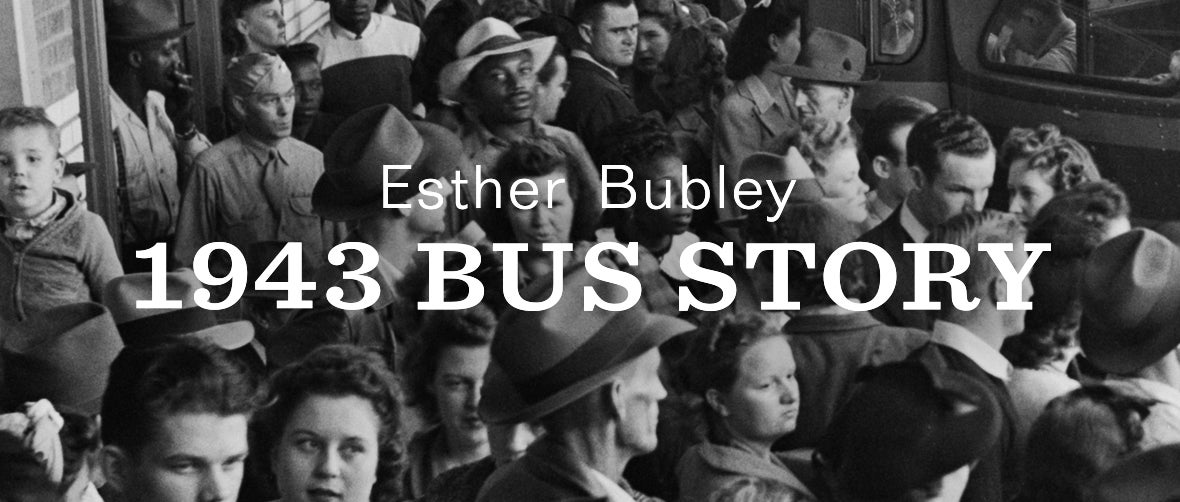
Esther Bubley: 1943 Bus Story
In 1942, twenty-one-year-old Esther Bubley (1921–98), a recent graduate from the photography program at the Minneapolis School of Art (now Minneapolis College of Art and Design), accepted a position with the Office of War Information (OWI) in Washington, D.C. to work as a darkroom lab technician. The OWI had recently absorbed the Farm Security Administration (FSA) and their stable of legendary documentary photographers, including Dorothea Lange, Jack Delano, and Russell Lee, among others. The OWI had shifted the focus of the photographers’ assignments away from the FSA’s emphasis on rural poverty and the conditions of farm workers and towards the country’s mobilization efforts for World War II. At work, Bubley formed friendships with many of the program’s photographers, who soon recognized her talents and ambition as a photographer. Before long, Roy Stryker, the program’s director, offered her a position working in the field.
In 1943, Stryker sent Bubley on a six-week bus trip to document the country’s transition between the Great Depression and World War II. Public transportation had seen a sharp increase in ridership with wartime rationing of rubber and gasoline, and Bubley’s unassuming demeanor and inclination for photographing ordinary people and daily life paired well with the close quarters of bus travel. “Put me down with the people, and it’s just overwhelming,” Bubley once exclaimed in an interview. On assignment, she rode crowded buses throughout the country, using her square format Rolleiflex camera to capture intimate and empathetic images of bus-riders on routes throughout the Midwest and southern United States. A number of the photographs offer stark reminders of racial segregation and the realities of the era. Much of Bubley’s recognition rests on her work from this early assignment, which remains an elegant and sincere look at life in 1940s America.
Outside of her contributions to the OWI, Bubley worked with numerous magazines and corporate clients during the course of her career, including Life magazine, UNICEF, Standard Oil Company, and Pepsi-Cola. Her work was also embraced by the fine art world. In 1955, Edward Steichen included her work in his monumental exhibition, The Family of Man, at the Museum of Modern Art in New York. In 1956, she had a solo exhibition at the Limelight Gallery—one of New York’s first galleries dedicated to the display of photography. Today, her works are held in the permanent collections of notable institutions including the Museum of Modern Art, New York; the Metropolitan Museum of Art, New York; the George Eastman House, Rochester; the National Portrait Gallery, Washington, D.C.; and the Library of Congress, Washington, D.C.
©2017 by San Francisco Airport Commission. All rights reserved.
